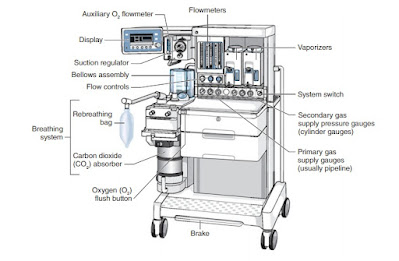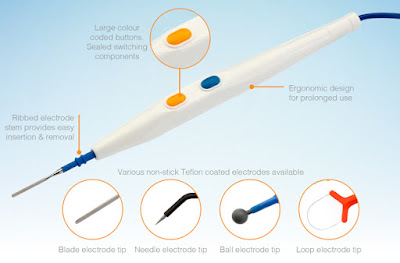Batch Dosimeters with their types
Dosimeters
- A batch dosimeter is a type of radiation dosimeter that is designed to measure the amount of radiation exposure over a specific period, typically over several weeks or months.
- Batch dosimeters are often used in occupational settings where workers may be exposed to radiation regularly, such as in nuclear power plants, medical facilities, or research laboratories.

- They are also relatively inexpensive and easy to use, making them a practical option for many occupational settings.
- Radiation workers who are issued single badges for monitoring whole-body dose should wear them in the region of the collar with the label facing out. When a lead apron is worn, the dosimeter should be outside the lead apron.
- Technologists who work with fluoroscopy may wear two badges, one on the collar outside the lead apron and one at the waist that is under the apron. The two dosimeters should be distinguished by color or icons indicating their specific locations. Personnel who are issued dosimeters should wear them at all times when working in radiation areas and should keep them in a safe place, away from radiation and heat, when off duty.
Types of dosimeters:
There are several types of batch dosimeters available, each with its own advantages and disadvantages. Some common types include:
Film badge dosimeters:
These dosimeters use a small piece of film that is sensitive to radiation exposure. The film is exposed to radiation over a certain period and then developed to show the level of exposure. Film badge dosimeters are inexpensive and easy to use, but they can be affected by temperature and humidity.
They are still in use today but are much less common.
The disadvantage of this type of personal monitor is that the dental film is subject to fog when exposed to heat or fumes, and this exposure could result in a false reading. The film is also ruined if it is laundered! After a period of use, the film is returned to a laboratory that processes it and measures the OD of the film. The exposure is calculated and reported based on this measurement. Many radiographers still refer to their dosimeters as "film badges," but today they are more likely to be TLDs or OSLs.
Except OSL badges, dosimeters cannot accurately measure total exposures of less than 5 mrem (0.05 mSv). For this reason, personnel who receive very small amounts of exposure will get more accurate measurements with less frequent badge changes. Personnel involved in diagnostic radiography who are always or nearly always in a control booth during exposures are usually best monitored with quarterly service. Monthly service is a better choice for those who work in fluoroscopy and those who perform bedside radiography.
Service companies provide an extra dosimeter in every batch that is marked "CONTROL." The purpose of this dosimeter is to measure any radiation exposure to the entire batch while in transit. Any amount of exposure measured from the control badge will be subtracted from the amounts measured from the other badges in the batch. The control badge should be kept in a safe place, away from any possibility of x-ray exposure. It should never be used to measure occupational dose or for any other purpose.
Radiation badge service companies will want to know the name, birth date, and Social Security number of all persons to be monitored so that all records can be accurately identified. If there has been a history of previous occupational radiation exposure and the dose is known, this information should also be provided so that the record will be complete and accurate. Exposure reports are sent to the subscriber for each batch, and an annual summary of personal exposure is also provided. Radiation workers should be advised of the radiation exposure reported from their badges and should be provided with copies of the annual reports for their own records. Employees exposed to ionizing radiation should not leave their employment without a complete record of their radiation exposure history. Employers are required to provide this information.
Thermo-luminescent dosimeters (TLDs):
TLD stands for thermoluminescent dosimeter. The roots of this term mean "dose-measuring device that gives off light when heated." The TLD is a type of personal monitor commonly used by radiographers.
It consists of a plastic badge or ring containing one or more lithium fluoride crystals. These crystals (and several others with similar characteristics) absorb x-ray energy and, when heated, give off the energy again in the form of light. The TLD is more durable than the film badge insert and responds only to ionizing radiation exposure. TLDs are more accurate than film badge dosimeters, but they are also more expensive.
Optically Stimulated Luminescence (OSL) dosimeters: These dosimeters use a small piece of aluminum oxide that is sensitive to radiation exposure. When the crystal is exposed to radiation, it traps the energy from the radiation. The dosimeter is then read using a laser that causes the crystal to emit light, and the amount of light emitted is proportional to the amount of radiation exposure. OSL dosimeters are very accurate and can be reused, but they are also more expensive than other types of dosimeters.
Pocket ionization chambers: These dosimeters use a small chamber filled with air that is sensitive to radiation exposure. When radiation passes through the chamber, it ionizes the air, which can be measured to determine the level of exposure. Pocket ionization chambers are very accurate, but they are also expensive and require regular calibration.
The choice of dosimeter type will depend on the specific needs of the user and the type of radiation exposure monitored.
Research :
We present the characteristics of a new silicone-based radio chromic dose-response dosimeter
containing the leuco-malachite green (LMG) dye. The dose-response as well as the dose rate and photon-energy dependence of the dosimeter were characterized. To optimize the dose-response, different concentrations of the chemical components were investigated. The dose-response was found to decrease exponentially as a function of time after irradiation. A
cylindrical dosimeter was produced and irradiated with a volumetric modulated arc therapy
plan; the standard deviation between the measured and calculated dose was 5% of the total dose.
A new dosimeter formulation for deformable 3D dose verification
E M Høye1, P S Skyt1, E S Yates1, L P Muren1, J B B Petersen1 and P Balling2
Published under license by IOP Publishing Ltd
, ,





